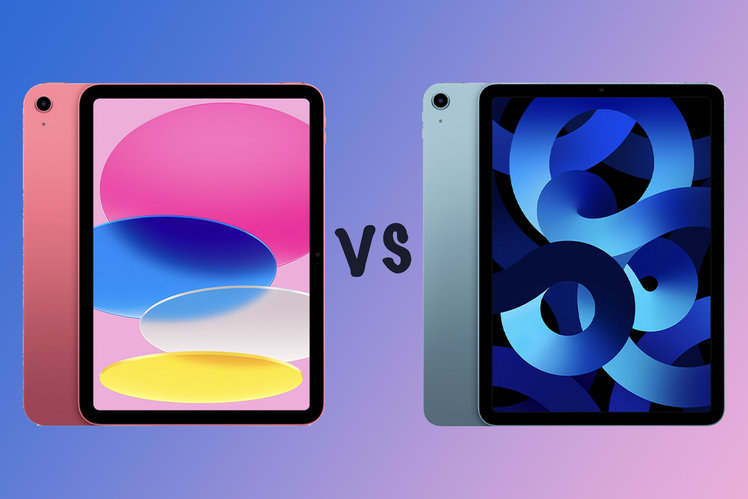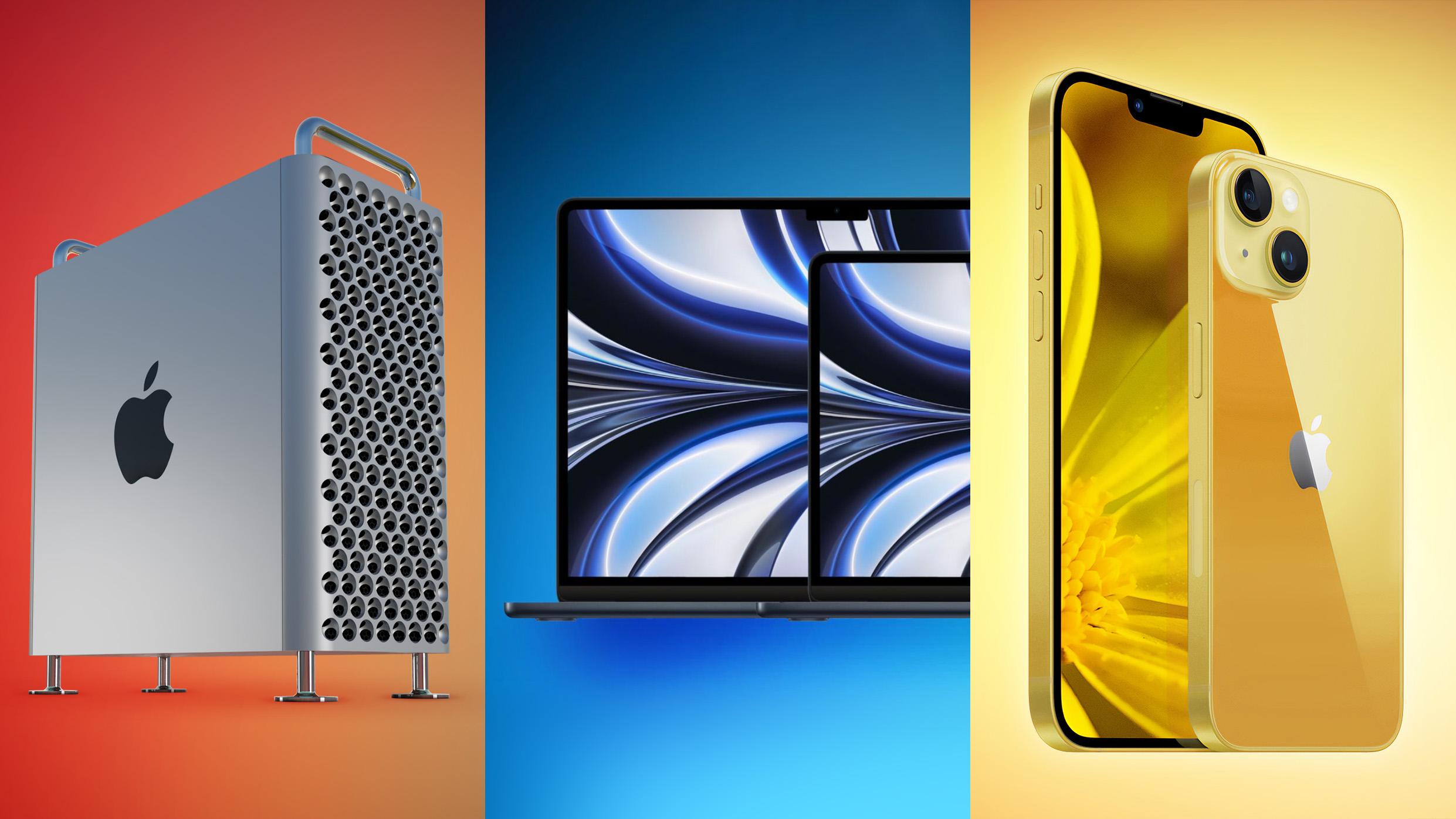Apple revealed the 10th generation of the entry-level iPad in October, offering a redesign, chip upgrade and a colour refresh over its predecessor.
The redesign of the entry level iPad sees it finally ditch the Home Button and opt for a very similar look to the iPad Air. The price has also increased, making the decision between the entry-level iPad and the iPad Air that little bit harder.
With that in mind, we’ve run up the differences between the iPad (10th generation) and the iPad Air (2022) to help you work out what the differences are and which might make the most sense to buy.
Price
iPad (10th gen): From £499/$449iPad Air: From £669/$599
Let’s first start with the price as this may be the deciding factor between these two models, depending on your budget.
The iPad (10th generation) is available to pre-order now and it will hit shelves on 26 October. It starts at $449 in the US and £499 in the UK for the Wi-Fi only model.
The iPad Air meanwhile, starts at £669 in the UK and $599 in the US. That’s again for the Wi-Fi only model. Both the iPad (10th gen) and the iPad Air come in Wi-Fi and Cellular models too though.
Design
iPad (10th gen): 248.6 x 179.5 x 7mm, 477giPad Air: 247.6 x 178.5 x 6.1mm, 461g
The Apple iPad (10th generation) and the iPad Air are virtually identical in terms of their designs. Both opt for uniformed bezels around their displays, aluminium bodies with flat edges and they both have a power button at the top with Touch ID built in.
The two devices also both have a single camera lens in the top left corner of the rear, a USB-C charging port flanked by speakers at the bottom and a Smart Connector. The iPad (10th gen) has its Smart Connector on the left edge, while the iPad Air has its Smart Connector on the rear.
The colours are also different between the devices. The iPad (10th generation) comes in Silver, Pink, Yellow and Blue options, while the iPad Air comes in Space Grey, Starlight, Purple, Blue and Pink. Where the iPad (10th gen)’s colours are bright though, the iPad Air’s colours are pastel and more muted.
The other difference between the two models in terms of design is the FaceTime HD front camera is positioned on the right edge of the iPad (10th generation), which makes it more useful for video calling when held horizontally. The iPad Air meanwhile, has the front camera at the top of the display when held vertically.
In terms of measurements, the iPad (10th generation) is slightly larger – fractionally mind – and it is 1mm thicker too. It is also slightly heavier.
Display
iPad (10th gen): 10.9-inch, 2360 x 1640 pixels, 264ppi, True ToneiPad Air: 10.9-inch, 2360 x 1640 pixels, 264ppi, True Tone, Anti-reflective coating, Fully laminated
The Apple iPad (10th generation) and the iPad Air both come with a 10.9-inch display offering a 2360 x 1640 pixel resolution. It means both devices have a pixel density of 264ppi.
The two tablets opt for a Liquid Retina Display and they both have a maximum brightness of 500nits. Apple’s True Tone technology is also supported on both devices and they both have a fingerprint-resistant oleophobic coating.
There are a couple of differences in the iPad (10th gen) and iPad Air displays though. The iPad Air offers a P3 wide colour display, while the iPad (10th gen) is RGB. The iPad Air also has a fully laminated display and an anti-reflective coating, which you likely would notice in use.
Hardware and specs
iPad (10th gen): A14 chip, 64/256GB, 12MP front camera, 12MP rear camera, USB-CiPad Air: M1 chip, 64/256GB, 12MP front camera, 12MP rear camera, USB-C
The Apple iPad (10th generation) runs on the A14 Bionic chip, which offers a 6-core CPU and a 4-core GPU. There’s a 16-core Neural Engine on board too. The iPad Air meanwhile, runs on the M1 chip, which offers an 8-core CPU and 8-core GPU. It has a 16-core Neural Engine too, but there’s 8GB of RAM on board as well. The iPad Air also has a Media Engine on board.
In terms of other specifications, both the iPad (10th generation) and the iPad Air have a 12-megapixel rear camera on board, with a f/1.8 aperture, 5x digital zoom and Smart HDR 3 for photos. They also both offer up to 4K video recording up to 60fps. On the front, both tablets have a 12-megapixel camera with f/2.4 aperture, a Retina Flash and features like Centre Stage.
They also both have the same battery promise, with up to 10 hours of watching video or up to 9 hours surfing the web. Both have USB-C for charging. Storage options are the same too, with both the iPad (10th generation) and the iPad Air offered in 64GB and 256GB options.
Elsewhere, the iPad Air is compatible with the 2nd generation Apple Pencil, while the iPad (10th generation) is only compatible with the first generation Apple Pencil.
Software
iPad (10th gen): iPadOS 16, no Stage ManageriPad Air: iPadOS 16
Both the iPad (10th generation) and the iPad Air will run on iPadOS 16 so the experience will be familiar across both devices.
The iPad Air will offer Stage Manager, while the iPad (10th generation) won’t, but most features will transfer across both models.
Conclusion
The Apple iPad (10th generation) and the iPad Air feature a very similar design, along with the same size display, same storage options, same battery and the same cameras.
The iPad Air has a more powerful processor under its hood, and it comes with some extra features, like Stage Manager, as well as compatiblity with the 2nd generation Apple Pencil and the Smart Keyboard Folio. The Air’s display also has an anti-reflective coating and fully laminated display.
Overall, on paper, the iPad (10th generation) makes a lot of sense and for many, it will be the most obvious choice between these two devices. Some will want the extra power – of which the M1 chip offers plenty – but for others, the iPad (10th generation) will be the one to buy. We will update this feature when we have reviewed the iPad (10th generation). For now, you can read our full iPad Air (2022) review.







